Published
on 5
Feb 2020
|
All rights reserved.
|
|
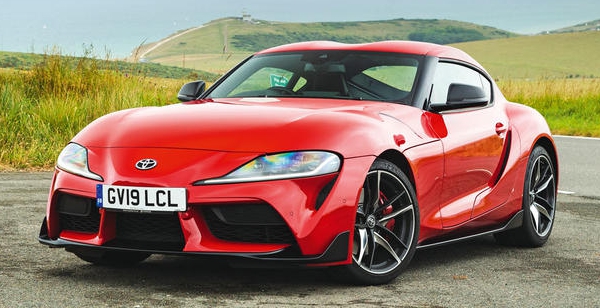
|
|
After
disappearing for almost 2 decades, the Supra returns, but in a very
different way...
|
|
Officially, this is the
5th generation Supra. However, if you discount the first 2 generations,
which were actually the range-topping, 6-cylinder model of the Celica line (that’s why they were
called Celica Supra or Celica XX), the first true Supra as an
independent product line has to be the 1986 model. Back then, I got a
brochure of the car thus was quite familiar with it. Its styling was
heavily influenced by Corvette C4 and Porsche 944. The proportion was
flawless, the mechanicals were state of the art, and performance was
pretty decent, if not outstanding. The second generation launched in
1993 took performance and handling to higher level, probably better
than any European production GTs then. Unfortunately, it was born at
the wrong time. Bubble economy in Japan got burst, followed by a decade
of depression. Western countries were not in a good shape either. When
global economy recovered in the late 1990s, the Supra was already too
old. Market trend shifted towards lightweight, fun-to-drive roadsters.
Heavyweight GTs became outdated. As a result, the Supra soldiered on
until 2002. Story ended.
To many fans, including Akio Toyoda, the death of Supra left a deep
sorrow. Understandably, Supra was the performance flagship as well as
the pride of Toyota. To a certain degree, the introduction of Lexus LFA
in 2009 relieved the pain, but it can never replace the position of
Supra.
In early 2014, Toyota unveiled a concept called FT-1 in Detroit auto
show. Being a front-engined, rear-drive 2+2 GT, it revived the hope for
a new Supra…
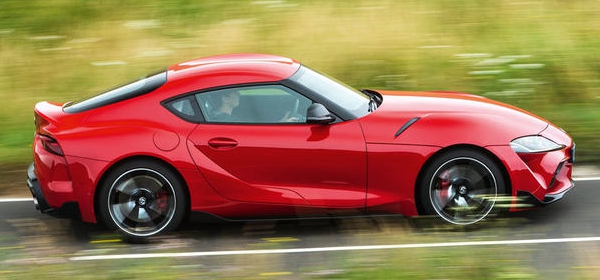
|
|
The
strange proportion is governed by the mechanical package supplied by
BMW...
|
|
Fast forward to January 2019, again at Detroit auto show, the new
production Supra was finally unveiled. Although its codename, A90,
follows the tradition of Supra, the new car looks very different. Very
much like a 1960s front-engined sports car, it has plenty of curves and
muscular flanks. The cockpit is set well behind, close to the rear
axle. Unfortunately, the windscreen is too upright. The long bonnet is
set too high, even 19-inch wheels cannot help visually. The car looks
narrow, although in fact it is not (at 1865mm). Overall speaking, the
proportion is somewhat flawed. The combination of F1-car-inspired nose
and 3 large square intakes is aesthetically challenging, too. However,
viewing the car in the real world will find it less weird than in
pictures. At least, it is one of the most special designs in production.
In fact, such a strange proportion is governed by the mechanical
package supplied by BMW. As you should know, the new Supra is not a
Toyota-developed product, but a revamped version of BMW Z4. BMW
approached Toyota for partnership as it needs the extra economy of
scale to keep the Z4 alive. To keep direct competition as little as
possible, they decided that the German car to be roadster only, while
the Japanese car be strictly a coupe. Although the styling is done
purely by Toyota, it has to accept the underpinnings and all the
hardpoints provided by the Z4. The Z4 needs to install a straight-six
engine under the bonnet, and BMW's Valvetronic engine has always been
tall, hence the wrong proportion.
Compared with Z4, the Supra is slightly longer but it keeps the same,
very short 2470mm wheelbase. It is now a 2-seater, breaking the 2+2
tradition of its predecessors. Then again, when you revamp another car
to be yours, you have no rights to talk about tradition.
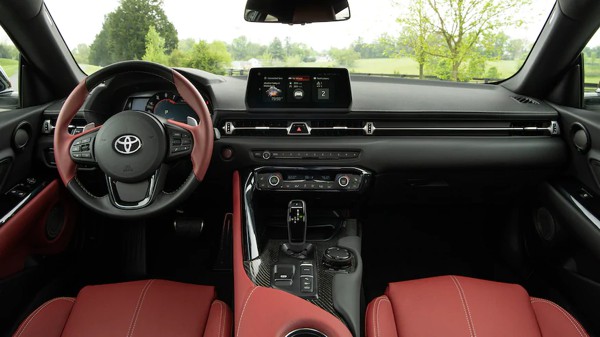
|
|
The
cockpit is as snug as that of the Z4. Switchgears are familiar.
|
|
Inside, its design is quite different from the Z4, but you can see
familiar switchgears, instrument and the overall architecture. The
infotainment system is actually iDrive, just with revised graphical
interface.
Naturally, the cockpit is as snug as that of the Z4. A Porsche 718
Cayman or Boxster feels roomier, especially in terms of width, and
outward visibility is better than this one. The Supra’s cockpit is
darker and more claustrophobic, as its pillars are thick and windows
are small. On the plus side, the driving position, seats and ergonomics
are faultless. Perceived quality is acceptable. Cabin storage is
limited. The boot is quite generous for a coupe, but there is no
partition between the boot and the space behind the seats, so the
luggage keeps sliding in a spirited weekend journey.
Predictably, the Supra is powered by BMW's 3-liter single-turbo
straight-six that produces 340 hp and 369 lbft, like the European Z4
M40i (strangely, even though the American Z4 gets 382 hp due to the
removal of particulate filters, the Supra declines to follow).
Transmission is the same ZF 8-speed automatic, without any manual or
DCT options, again like the Z4. This could be a disappointment, because
the Supra is supposed to be more hardcore than a roadster.
As the Supra is 40kg lighter than its open-top cousin, it is capable to
sprint from rest to 60 mph in 4.1 seconds, 0.2s quicker than the
equivalent Z4. Top speed is limited to 155 mph like the German norm. In
pure numbers, the Supra is Toyota’s top dog, but it is slightly slower
than the V8-powered Lexus RC F, at least on straight.
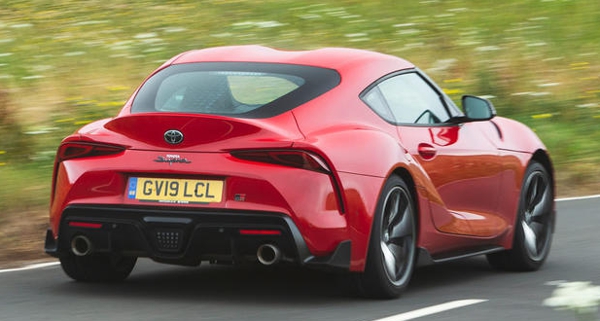 |
|
The
exhaust note of BMW straight-6 might be a bit subdued, but far more
delicious to ears than the 4-cylinder beat of Porsche 718.
|
|
While American customers get only the straight-6 engine, Japanese
version (and probably European later on) gets also a 2.0-liter
four-cylinder turbo with either 258 hp or 197 hp. No prize to guess
that they are BMW fours. However, expect the majority of buyers will
opt for the range-topper, just like the best selling Ford Mustang is V8.
Although the fixed roof should save weight, the chassis is designed for
Z4 on the first place, so all the reinforcements at the floorpan, sills
and pillars necessary for an open-top car are already in place. This
brings the Supra unrivalled chassis rigidity. Higher than the Z4. In
fact, higher than even the carbon-fiber LFA.
The chassis design is inseparable from its platform donor, too, with
suspension consisting of MacPheson struts up front and multi-link at
the rear. Adaptive dampers are standard, as is BMW's active rear
differential. Wheels, tires and brakes are also shared with the Z4.
Chassis tuning, including suspension, steering and electronic aids,
however, is done by Toyota’s racing department Gazoo Racing. That is
also why the Supra is marketed outside Japan as GR Supra.
On the Road
Initially, the driving experience closely mirrors that of its BMW
cousin. The B58 straight-6 is as smooth and flexible as it has ever
been. Its power band is incredibly wide, willing to pull from as low as
1600 rpm and spins to 7000 rpm without hesitation. The exhaust note
might be a bit subdued for a performance machine, but far more
delicious to ears than the 4-cylinder beat of Porsche 718. Straight
line acceleration is quick enough. The 8-speed automatic is smooth and
responsive for its kind, although you will miss either the involvement
of manual or the instantaneous downshift of a DCT.
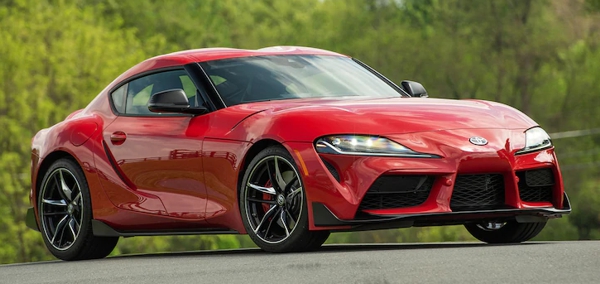
|
|
The
combination of a fixed roof body and unique chassis tuning gives the
Supra sufficient character of its own.
|
|
The chassis keeps some merits of BMW as well. It suspension rides
smoothly on all but the most difficult roads, even in Sport mode. This
make it a very easy car to live with, provided you don't mind the
excessive tire noise heard in the cockpit. The 50:50 weight
distribution affords nice balance and agility, while the very wide
Michelin tires offer outstanding grip. However, the combination of a
fixed roof body and unique chassis tuning gives the Supra sufficient
character of its own. Its steering is a bit lighter, quicker and more
delicate than the Z4’s. Its adaptive suspension is softer than the BMW
in the most extreme mode, so its tail feels more planted in corner,
less prone to oversteer. The tires might be oversized for the power
they have to take care of, yes, and that makes the Supra less
adjustable on throttle. But when you push it harder and beyond its very
high limit, you will find it slides very progressively, more benign and
more predictable than the Z4. It is therefore a better driver’s car
than the BMW.
But is it good enough to challenge the class-leading Alpine A110 or
Porsche 718? No, absolutely not. As good as the tuning is, the Supra is
no match for a good mid-engined sports car for agility, precision and
communicative steering. Its chassis balance is good for an FR, but not
as good as its mid-engined rivals. It carries at least 110 kg more than
the Porsche (and a lot more than the lightweight A110), and the mass is
more concentrated on both axles. This can be easily felt when you
steer, brake, apply throttle or when it hits a bump. Every response is
more hesitant, takes a while to settle. Yes, it beats those cars easily
in terms of engine NVH or sound, but its automatic gearbox robs it some
fun.
Alternatively, if you compare the Supra with other FR coupes, you will
find it not quite as fast and as sporty as another BMW, i.e. M2
Competition, which is slightly cheaper than the £54,000 Supra. In
fact, even the 718 Cayman S costs no more, and it is a Porsche. Isn’t
the Japanese car overpriced? Well, who says it is Japanese? The Surpa
is assembled by contract manufacturer Magna Steyr in Austra, alongside
the Z4.
|
Verdict:    
|
|